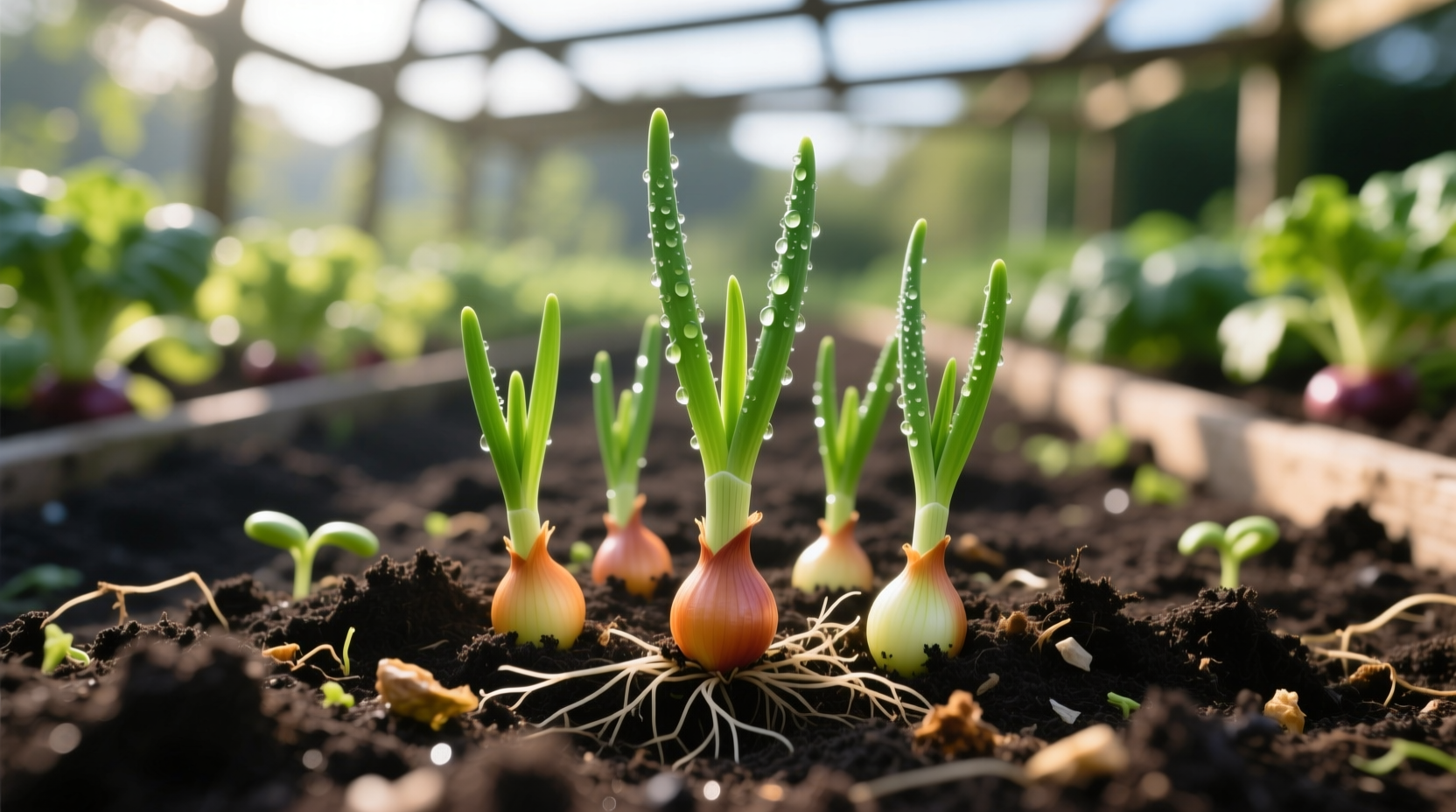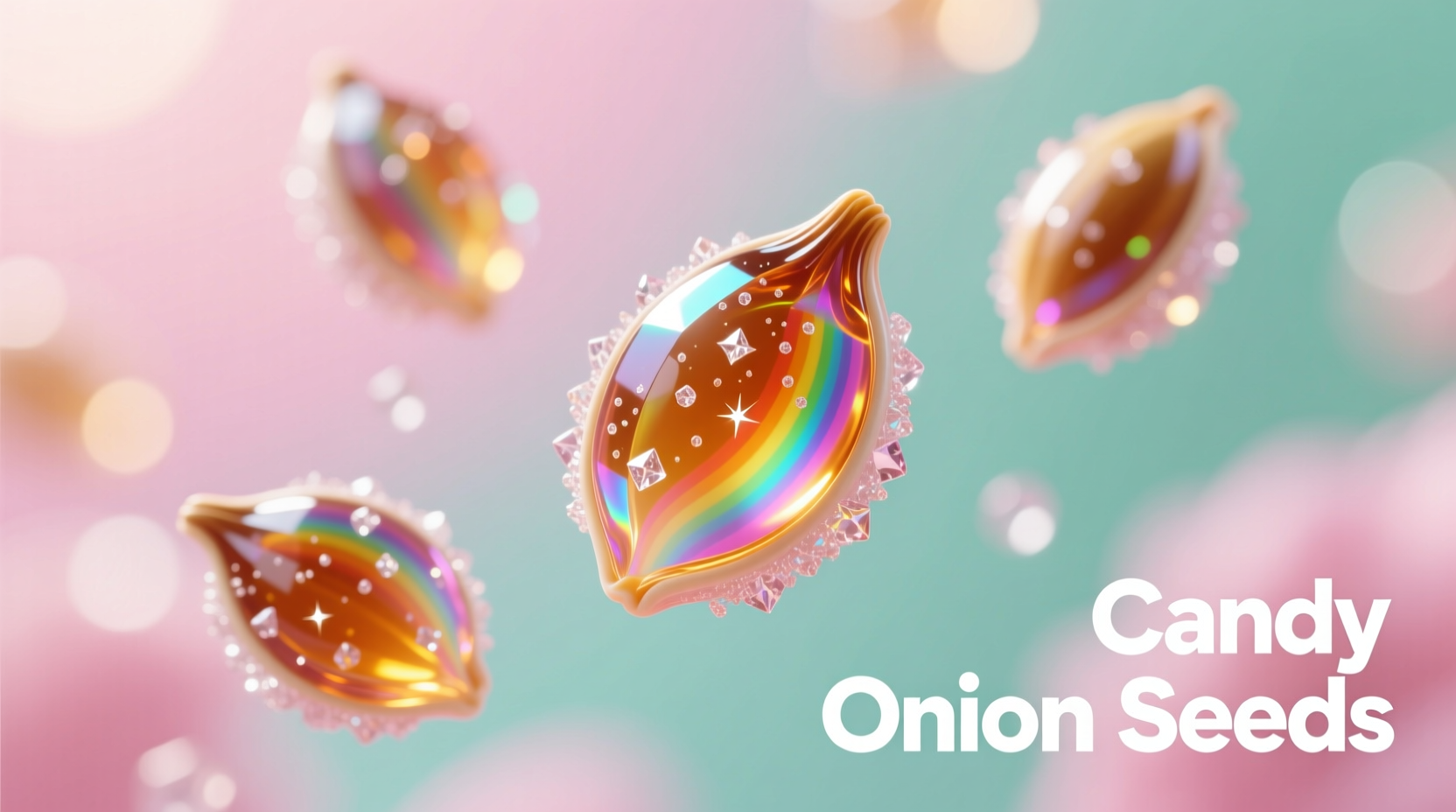Understanding Candy Onion Characteristics
Candy onions (Allium cepa) represent a specific F1 hybrid variety developed for exceptional sweetness and reliable performance in home gardens. According to the USDA Agricultural Research Service, their distinctive flavor profile comes from balanced sugar-to-pungency ratios that make them ideal for fresh eating without the intense bite of traditional yellow onions. The "candy" designation refers strictly to their flavor characteristics, not any added sugars or processing.
| Onion Variety | Sugar Content | Storage Life | Best Grown From | Days to Maturity |
|---|---|---|---|---|
| Candy | 7-10% | 2-3 months | Seeds | 75-85 days |
| Vidalia | 5-7% | 2-3 months | Sets | 90-100 days |
| Walla Walla | 6-8% | 1-2 months | Seeds | 90-110 days |
| Yellow Sweet Spanish | 5-6% | 3-4 months | Seeds | 110-120 days |
This comparison from Cornell University's Vegetable Growing Guide highlights why candy onion seeds appeal to home growers seeking quick-maturing sweet varieties. Their shorter growing season makes them suitable for regions with limited summer months, while their seed-grown nature avoids the disease risks associated with onion sets.
Optimal Planting Timeline for Success
Timing proves critical when growing candy onions from seed. The University of California's Agriculture and Natural Resources department recommends starting seeds indoors 8-10 weeks before your last expected frost date. This timeline allows seedlings to develop sufficiently before transplanting:
- Early spring: Start seeds indoors under grow lights
- 4-6 weeks before last frost: Begin hardening off seedlings
- After soil reaches 50°F (10°C): Transplant to garden
- 75-85 days after transplanting: Harvest mature bulbs
Unlike storage onions, candy varieties perform best when planted early in the season to mature during longer daylight hours. Delayed planting often results in smaller bulbs with less developed sweetness.
Step-by-Step Seed Starting Process
Follow these research-backed steps for optimal germination and early growth:
- Seed selection: Choose fresh, certified disease-free seeds (viability drops significantly after 1 year)
- Soil preparation: Use sterile seed starting mix with excellent drainage
- Sowing depth: Plant seeds ¼ inch deep, maintaining consistent moisture
- Temperature control: Keep soil at 65-75°F (18-24°C) for fastest germination
- Light requirements: Provide 14-16 hours of bright light daily after sprouting
- Thinning: Space seedlings 1 inch apart when first true leaves appear
Research from Oregon State University shows that maintaining consistent soil moisture during germination increases candy onion seed viability by up to 35% compared to erratic watering schedules.
Garden Requirements and Care
Candy onions thrive under specific conditions that maximize their sweetness potential:
Soil and Nutrition Needs
Prepare garden beds with 3-4 inches of compost worked into the top 6-8 inches of soil. Candy onions prefer slightly acidic to neutral soil (pH 6.0-7.0). Apply a balanced fertilizer when transplanting, then switch to nitrogen-rich feed every 2-3 weeks until bulbs begin forming. The University of Minnesota Extension notes that boron deficiency particularly affects sweet onion varieties, causing internal browning - consider adding boron if your soil test indicates low levels.
Water Management
Maintain consistent moisture (1-1.5 inches per week), increasing slightly as bulbs begin swelling. Reduce watering 2-3 weeks before harvest to improve storage quality. Drip irrigation works best for maintaining even moisture without wetting foliage.

Common Growing Challenges and Solutions
While candy onions prove relatively trouble-free, these issues require attention:
Pest Management
Thrips represent the most common pest, identifiable by silvery streaks on leaves. The University of California Integrated Pest Management program recommends insecticidal soap applications at first sign of damage. Onion maggots can be prevented by using floating row covers immediately after transplanting.
Disease Prevention
Downy mildew appears as purple-gray fuzz on leaves during cool, wet periods. Prevent this by spacing plants for good air circulation and avoiding overhead watering. Rotate planting locations annually to reduce soil-borne disease risks.
Environmental Factors
Candy onions perform best in regions with moderate temperatures (60-75°F / 15-24°C). Extreme heat causes premature bolting, while prolonged cold temperatures can trigger flowering. In warmer climates, plant as a fall crop for winter harvest.
Harvesting and Storage Techniques
Harvest candy onions when tops naturally fall over and begin yellowing. Carefully loosen soil around bulbs and lift them out. Cure bulbs in a warm, dry, well-ventilated area for 2-3 weeks until necks are completely dry and papery.
Unlike storage onions, candy varieties have thinner skins and higher water content, limiting their shelf life. Store cured bulbs in mesh bags in a cool, dark place with good air circulation. The National Onion Association reports sweet onions maintain best quality for 2-3 months under proper storage conditions.
Culinary Applications of Homegrown Candy Onions
The exceptional sweetness of homegrown candy onions makes them versatile in the kitchen:
- Slice raw for salads, sandwiches, and burgers without causing eye irritation
- Caramelize slowly for rich, sweet flavor bases in soups and stews
- Grill whole for a sweet side dish that complements meats
- Pickle for a sweet-tangy condiment that retains crunch
- Use in fresh salsas where milder onion flavor is preferred
Professional chefs particularly value homegrown candy onions for their consistent size and predictable sweetness, eliminating the guesswork required with store-bought sweet onions that often vary in quality.
Troubleshooting Common Growing Issues
Address these frequent problems with targeted solutions:
| Issue | Probable Cause | Solution |
|---|---|---|
| Small bulbs | Overcrowding, nutrient deficiency, or late planting | Thin seedlings to 4-6 inches apart; apply nitrogen fertilizer; plant earlier next season |
| Bolting (flowering) | Temperature fluctuations or oversized sets | Remove flower stalks immediately; plant seeds at proper time for your zone |
| Soft, rotting bulbs | Overwatering or poor drainage | Improve soil drainage; reduce watering as harvest approaches |











 浙公网安备
33010002000092号
浙公网安备
33010002000092号 浙B2-20120091-4
浙B2-20120091-4